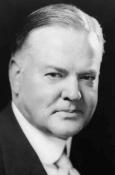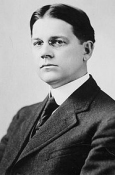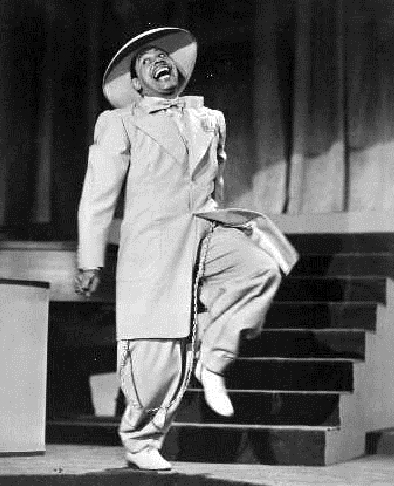
Postage Stamps of the United States - 1931
Politics

President
Herbert Hoover

Postmaster General
Walter F. Brown
Music

Click Control Above To Hear
1931 "Minnie The Moocher"
Postage Rates
Domestic Letter Rate: 2¢ per oz.
Postcard Rate: 1¢
Air Mail Rate: 5¢ per oz.
Stamps
The Commemorative Postage Stamps Issued in 1931
Flat Plate - Perf 11

2¢ General Pulaski
First Day: Jan. 16, 1931
400 Subject Plates
96,559,400 issued

2¢ Red Cross
First Day: May 21, 1931
200 Subject Plates
99,074,600 issued

2¢ Surrender at Yorktown
First Day: Oct. 19, 1931
100 Subject Plates
25,006,400 issued
The 2¢ General Pulaski of 1931
In 1777, while in Paris trying to enlist the help of the French, Benjamin Franklin persuaded the debt-ridden and exiled Polish nobleman Casimir Pulaski to come to America to help fight in America's war of independence.His experience in fighting the Russian army in his native Poland made him a great asset in so far as the training and leadership he gave the American troops. His bravery on the battlefield soon led to promotion to the rank of brigadier general in command of the American cavalry; in fact he would go on to be known as the "Father of the American Cavalry". By 1779, he was in the South leading the cavalry in a joint effort with the French to recapture the city of Savannah, Georgia. His heroism in the battle, in which he was mortally wounded, assured him a place of honor in American history.
Pulaski certainly was one of the heroes of the American Revolution, but this is not the entire reason he appears on this stamp. Many other nation's contributions to the war had been honored in stamps, and now Polish Americans felt it was their turn to be honored and lobbied heavily for such a stamp. This is rather ironic, since Poland is one of the few countries on the European continent in which the U.S. has maintained a friendship since establishing our independence, and one of the last to be so honored with a stamp.
First Day sales were in Savannah, Georgia, and also in Chicago, Illinois; Gary and South Bend, Indiana; Brooklyn, Buffalo and New York City, New York; Cleveland and Toledo, Ohio; Pittsburgh, Pennsylvania; and Milwaukee, Wisconsin. Most are cities with large Polish populations.
The 2¢ Red Cross Issue of 1931
The two cent Red Cross stamp commemorated the 50th anniversary of the founding of the American National Association of the Red Cross on May 21, 1881. This stamp was very popular at the time it was issued, and added to the bi-colored design allowing many plate combinations, enough copies were saved that it brings little premium today. However, since it was printed in two steps, at least two panes were released without the red cross on one of the stamps; both stamps are obviously highly prized.
First Day sales were in Washington, D.C. and Dansville, New York, the home of the first Red Cross chapter.
The 2¢ Surrender of Cornwallis at Yorktown
As late as the summer of 1781, the fate of America's War of Independence still lay in the balance. New York City was still in the hands of the British and Lord Cornwallis troops, although recovering from setbacks in the Carolinas, had taken a stronghold in Yorktown, Virginia in an attempt to take control of Virginia before once again trying to subdue the Southern colonies.
General Washington wanted to attack New York City, but Rochambeau, head of the French forces aiding the Americans, thought that the British had an overwhelming superiority and advised Washington against such a move. Fortunately, a large French fleet under DeGrasse was headed north from the West Indies and Rochambeau was able to convince Washington to attack Cornwallis in Virginia instead. In September and early October, the French and American forces overwhelmed the British and forced Cornwallis, with an army of over 7000 troops, to surrender on October 19, 1781.
The victory was certainly a turning point in the war, but as with the Polish contribution the Pulaski stamp honors, the Yorktown stamp was issued to honor the French contribution to the American cause.
First Day sales were in Wethersfield, Connecticut, the site of the historic meetings between Washington and Rochambeau and in Yorktown, Virginia. Covers from other cities pre-dating First Day sales exist, but they were issued against official orders to not release the stamps until the 20th and are not considered philatelically important.
The Air Mail Stamp of 1931
Rotary Press - Perforated 10½ x 11 - 200 Subject Plates

This stamp merely reflects a change in the printing process for economic reasons, from flat plate to rotary press, with the concomitant change in perforation, from perf 11 to perf 10½ x 11. See the Air Mail stamp of 1930 for comparison. Although the stamp was released to Post Offices on August 17, no covers are known before the 19th, the day the stamp was released from the Philatelic Agency in Washington, D.C.
The 15¢ Orange Messenger on Motorcycle Special Delivery Postage Stamp of 1931
Rotary Press - Perforated 11 x 10½ - 200 Subject Plates

15¢ Orange Special Delivery
First Day: Aug. 13, 1931
As with the Air Mail stamp, this stamp merely reflects a change in the printing process for economic reasons, from flat plate to rotary press, with the concomitant change in perforation, from perf 11 to perf 11 x 10½. See the Special Delivery stamp of 1925 for comparison. The rotary stamp can be distinguished from its flat plate counterpart by color, the rotary stamp is a lighter shade of orange.
First Day sales were in Washington, D.C., although covers from Easton, Pennsylvania and possibly other cities pre-dating the First Day sales exist. Number lists covers from Easton dated August 6, 1931 as First Day Covers, although it could be argued that these covers would more appropriately be considered EKCs, earliest known covers. The entire issue is somewhat muddled by the fact that the Post Office did not consider these rotary printings to be new issues.
The following postage stamp varieties were first issued by the U.S. in 1931
Ordinary issue
Rotary Press Perf 11 x 10½
Number 692 - 11¢ Hayes - First Day: 9/4/1931
Number 693 - 12¢ Cleveland - First Day: 8/25/1931
Number 694 - 13¢ Harrison - First Day: 9/4/1931
Number 695 - 14¢ American Indian - First Day: 9/8/1931
Number 696 - 15¢ Statue of Liberty - First Day: 8/27/1931
Number 697 - 17¢ Wilson - First Day: 7/25/1931
Number 698 - 20¢ Golden Gate - First Day: 9/8/1931
Number 699 - 25¢ Niagara Falls - First Day: 7/25/1931
Number 700 - 30¢ American Buffalo - First Day: 9/8/1931
Number 701 - 50¢ Arlington - First Day: 9/4/1931
Commemoratives
Number 690 - 2¢ General Pulaski - Designer: A. R. Meissner - Engravers: J. Eissler (vignette) - E. M. Hall (lettering)
Number 702 - 2¢ Red Cross - Designer: A. R. Meissner - Engravers: J. Eissler (vignette) - E. M. Hall (lettering)
Number 703 - 2¢ Surrender at Yorktown - Designer: C. Aubrey Huston - Engravers: J. Eissler (vignette) and E. M. Hall (lettering)
Air Mail
Number C16 - The 5¢ Winged Globe - Rotary Press perf 10½ x 11
Special Delivery
Rotary Press perf 11 x 10½
Number E16 - Orange 15¢ Motorcycle - Designer: C. A. Huston - Engravers: L. S. Schofield (vignette) and E. M. Hall (lettering)
Postage Dues: The Postage Due Designs of 1931 and 1932
Flat Plate - Perf 11
Number J75 - The 30¢ Deep Carmine - January 18, 1931
Rotary Press - Wet Printings - Perf 11 x 10½ - Wet Vs Dry
Number J81 - 2¢ Carmine - October 22, 1931
Number J82 - 3¢ Carmine - November 21, 1931
Number J83 - 5¢ Carmine - September 18, 1931
Number J84 - 10¢ Carmine - September 15, 1931





